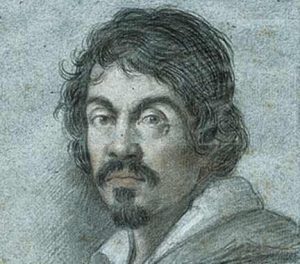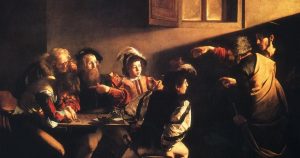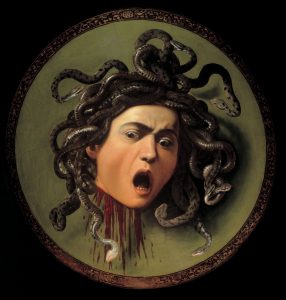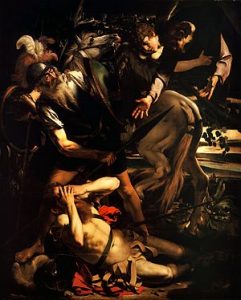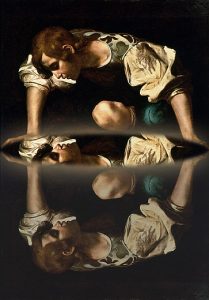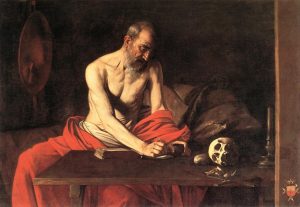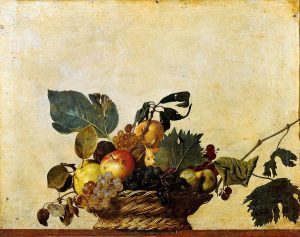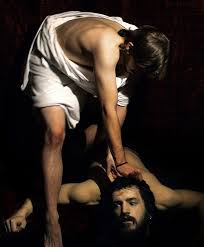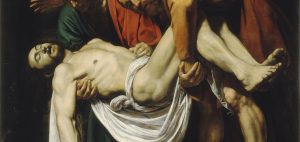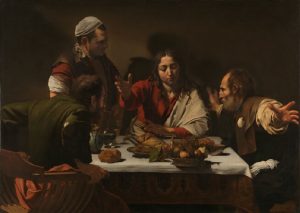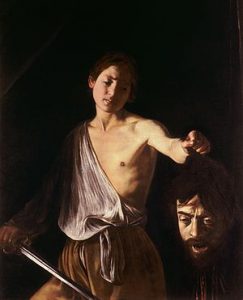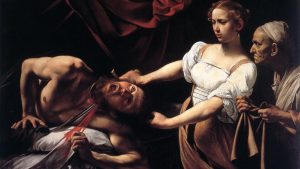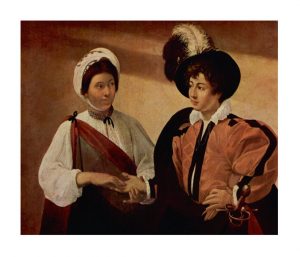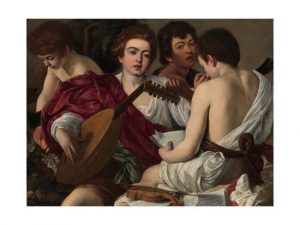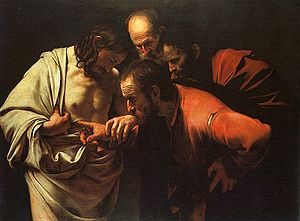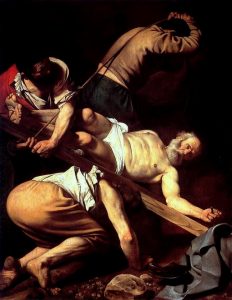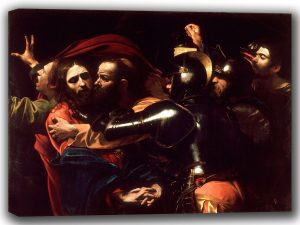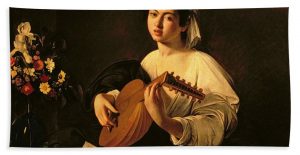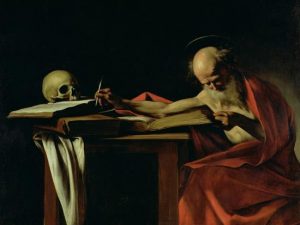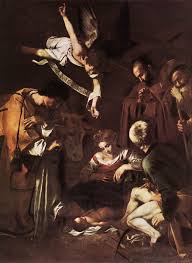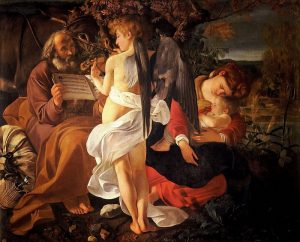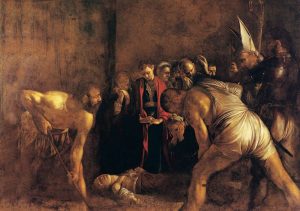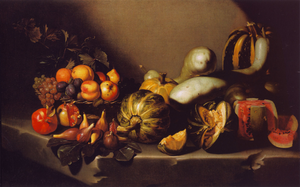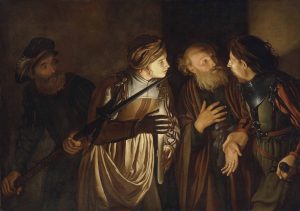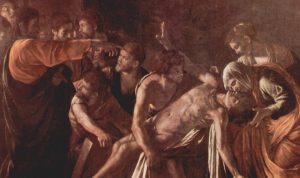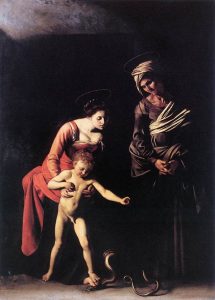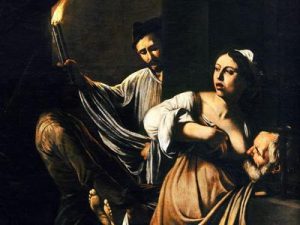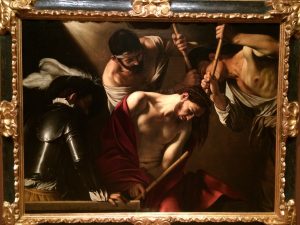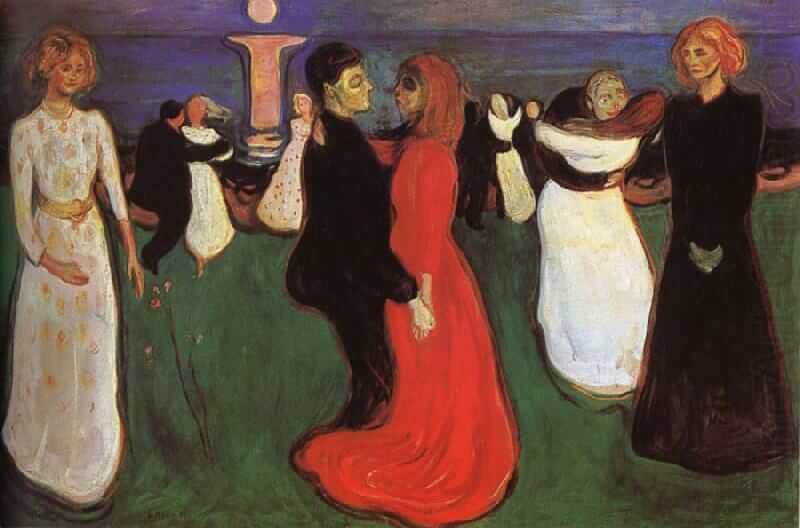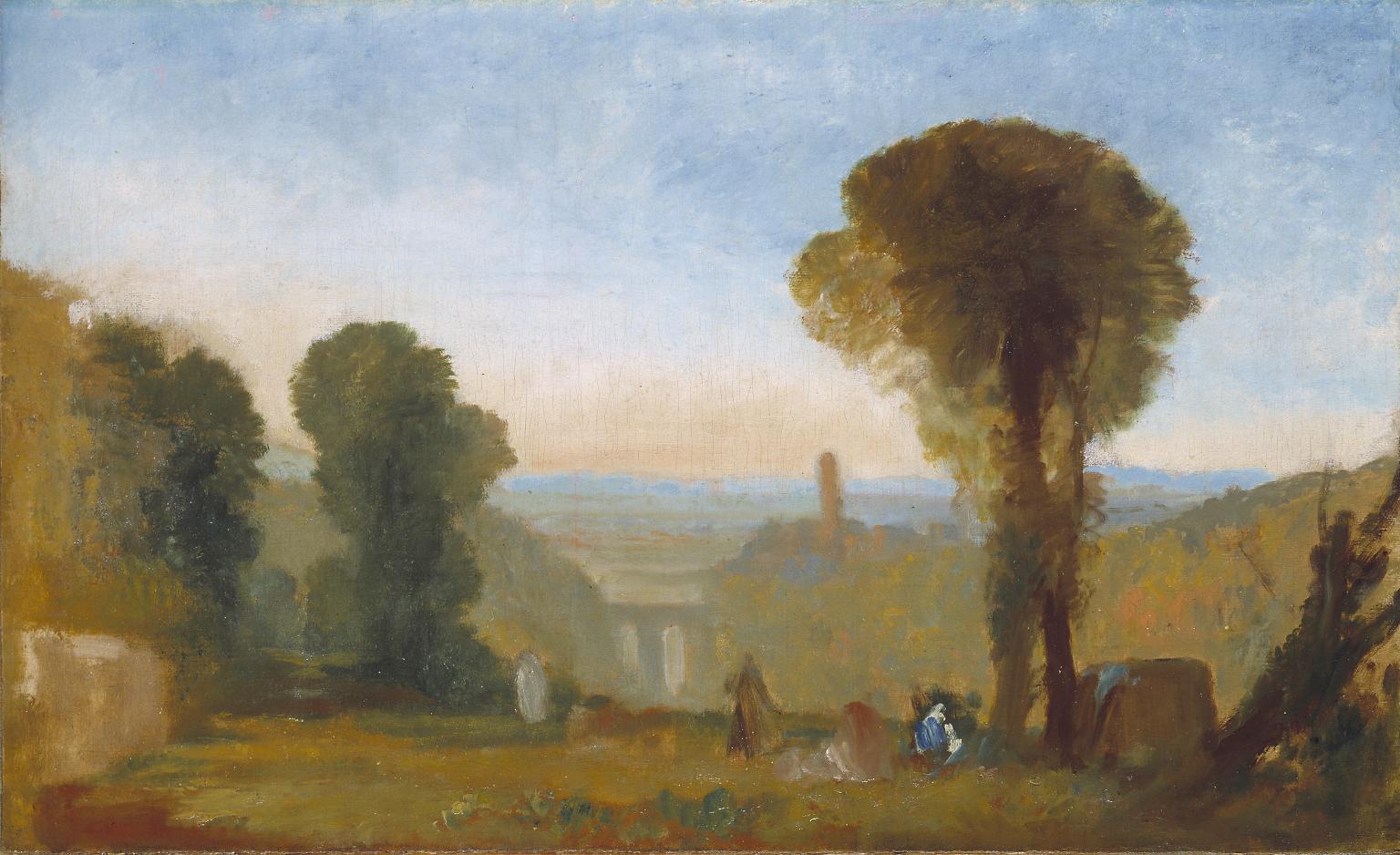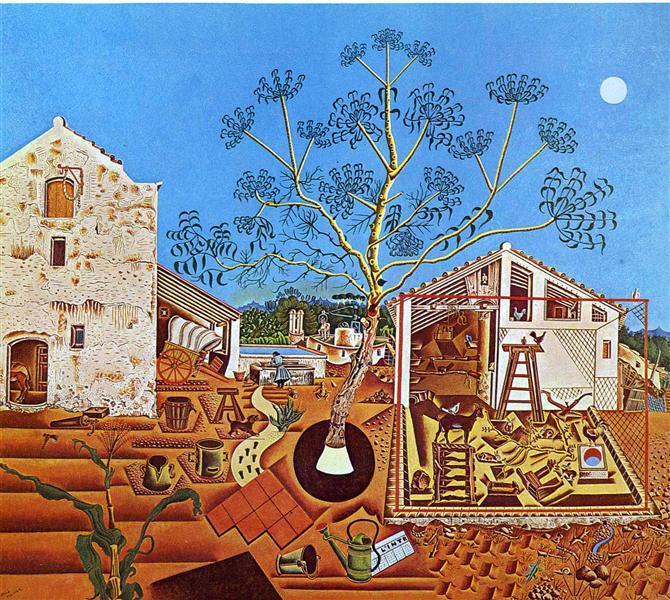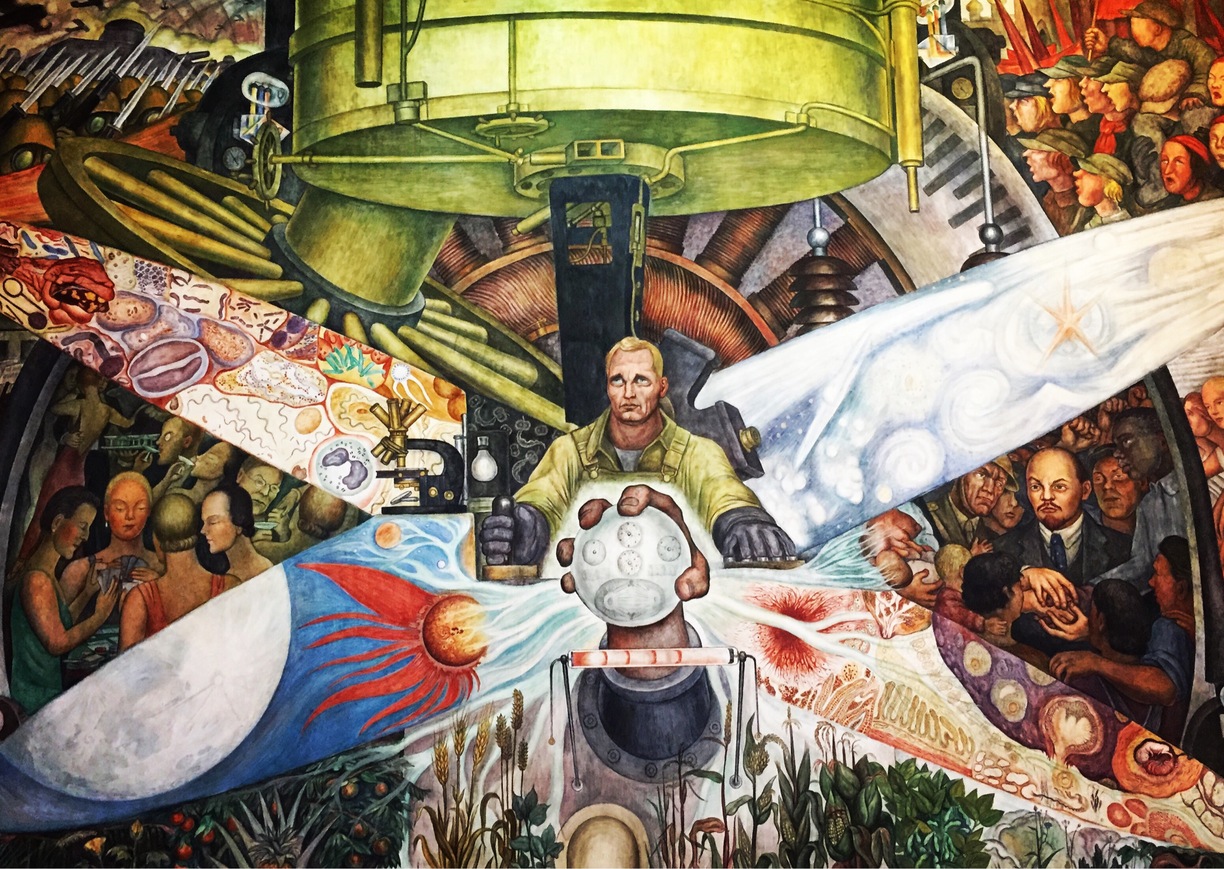29 of Caravaggio’s Paintings
Michelangelo Caravaggio of Italian origin was active between the 1590s and 1610. He played a significant role in inspiring Baroque painting and his work of art significantly portrayed the physical as well as the emotional state of human beings.
He used the chiaroscuro technique marked with the fabulous interplay of light and dark that was referred to as tenebrism. Most of his works center around the cycle of torture, immense struggle and death. Painters like Ruben, Rembrandt, Jusepe de Ribera, and Gian Lorenzo Bernini were highly influenced by his works and called themselves as Caravaggisti. He had a traumatic personal life and had been sentenced to death under charges of murder for which he was compelled to flee from Naples. He passed away in 1610 though there is a controversy regarding his death and some speculate it to be a murder.
Biography of Michelangelo Caravaggio in a Nutshell
| Full Name | Michelangelo Merisi da Caravaggio |
| Birth | 29th September 1571 |
| Nationality | Italian |
| Death | 18th July 1610 |
| Periods | Baroque, Italian Baroque, Renaissance, Baroque painting |
List of Caravaggio’s Famous Paintings
1. Calling of St. Matthew
| Completed in: |
| Style or Period: Italian Baroque art |
| Measurements: 322 cm × 340 cm (127 in × 130 in) |
| Location: Contarelli Chapel |
| Medium: Oil on canvas |
This is one of Caravaggio’s masterpieces where the theme of Jesus inspiring Mathew to tread on his footsteps has been portrayed. Through the presentation of this painting, the artist succeeds in capturing the immortal and mundane worlds in the same frame. It had been made for the Cappella Contarelli or Contarelli Chapel and presently it hangs alongside The Martyrdom of Saint Matthew as well as The Inspiration of Saint Matthew two of his other paintings centering on Matthews.
2. Bacchus
| Completed in: 1595 |
| Style or Period: Italian Baroque art |
| Measurements: 95 cm x 85 cm (37.4 in x 33.4 in) |
| Location: Uffizi Gallery, Florence |
| Medium: Oil on canvas |
A famous oil painting presenting the sensual image of a young boy dressed like Bacchus lying decked up in a headdress made of vine leaves and grapes, reclining in a unique posture, fiddling with his dress. Fruits and red wine lay in front of him, while he has a goblet in hand, perhaps inviting his viewers to be a part of the celebration. There could be traces of homoeroticism in the portrayal and Caravaggio might be expressing his own romantic feelings through this depiction. Certain critics have even mentioned that the model is the artist himself.
3. Medusa
| Completed in: 1595 -1598 |
| Style or Period: Baroque |
| Measurements: 60 cm × 55 cm (24 in × 22 in) |
| Location: Uffizi, Florence |
| Medium: Oil on canvas mounted on wood |
Two versions of this painting had been created in 1596 and 1597 where the moment of Medusa’s execution by Perseus has been put forth. The painting has a horrendous appeal as Caravaggio projects Medusa’s decapitated head and puts his own face to capture all the emotions of the female monster. The dreadful and bizarre gaze on the visage highlights the artist’s fascination towards realism and violence. He was commissioned by Cardinal Francesco Maria Del Monte to make this painting which the latter intended to gift Ferdinando I de’ Medici, the Duke of Tuscany. The technique of tenebrism involving the subtle contrast of dark and light alongside the realistic approach gives the painting a three-dimensional appeal.
4. The Conversion of Saint Paul
| Completed in: 1600 |
| Style or Period: Christian Art |
| Measurements: 237 cm × 189 cm (93 in × 74 in) |
| Location: Odescalchi Balbi Collection, Rome |
| Medium: Oil on cypress wood |
This along with another painting namely the Crucifixion of Saint Peter, had been commissioned by Tiberio Cerasi, though he rejected both of them at the first instance. In fact, second versions of two of the paintings had been made which remain in the Cerasi Chapel in the present time. The event when Paul the Apostle (Saul of Tarsus) was heading to Damascus to destroy the Christian community, but changes his mission after having a vision of Christ is recorded in this work. The jagged shapes and incoherent lighting patterns create an aura of crisis.
5. Narcissus
| Completed in: 1597 – 1599 |
| Style or Period: Baroque |
| Measurements: 110 cm × 92 cm (43 in × 36 in) |
| Location: Galleria Nazionale d’Arte Antica |
| Medium: Oil on canvas |
Narcissus, a popular theme of Classical mythology, centering around a handsome youth who falls for his own reflection and dies after being overwhelmed with passion and obsession, has been distinctly presented by Caravaggio. Here, the young page is seen gazing passionately at his own image that lay distorted and broken. The concept of tenebrism is implemented, where the artists sharply contrasts between light and dark spaces. Moreover, the darkness prevailing around the central character adds a sense of melancholy.
6. The Beheading of St John the Baptist
| Completed in: 1608 |
| Style or Period: Baroque |
| Measurements: 370 cm × 520 cm (150 in × 200 in) |
| Location: St. John’s Co-Cathedral |
| Medium: Oil on canvas |
Another of Caravaggio’s masterpiece and a significant work in the world of Western painting, having John the Baptist’s execution as the central theme. While the victim occupies the mainframe, Salome is also seen present adjacent to him, having a golden platter in hand for receiving the head. There is another bystander as a witness to this horrendous catastrophe. The image possesses an empty space, though because of the large area of the canvas the characters are depicted in a life-size manner. The contrast between light and dark besides the use of red and yellow give a vibrant and realistic appeal to the entire work of art.
7. Basket of Fruit
| Completed in: 1596 |
| Style or Period: Baroque, Still Life |
| Measurements: 46 cm × 64.5 cm (18 in × 25.4 in) |
| Location: Biblioteca Ambrosiana, Milan |
| Medium: Oil on canvas |
A perfect pictorial presentation, this still life painting shows a wicker basket filled with summer fruits sitting on one edge of a ledge. He presents details so intricately that the worm-eaten apple, dried leaf and the dust-laden grapes have been vividly projected.
8. David and Goliath
| Completed in: 1599 |
| Style or Period: Baroque |
| Measurements: 110 cm × 91 cm (43 in × 36 in) |
| Location: Prado |
| Medium: Oil on canvas |
One of Caravaggio’s early paintings, the Biblical theme of David and Goliath has been presented here. David, the young boy is seen grasping Goliath by hair. The interplay between light and dark has been fabulously portrayed here, where David’s legs, shoulder and arms is in brightness, while darkness prevails everywhere else. Initially, the painting was overloaded with melodrama where Goliath’s horrifying and panic-stricken face had been projected. He changed this later laying the main focus upon David whose face was concealed in the dark.
9. The Entombment of Christ
| Completed in: 1603-1604 |
| Style or Period: Baroque |
| Measurements: 300 cm × 203 cm (120 in × 80 in) |
| Location: Pinacoteca Vaticana, Vatican City |
| Medium: Oil on canvas |
This is one of the finest of Caravaggio’s altarpiece made for the chapel in Chiesa Nuova. A group of six people is seen within the frame with John the Evangelist holding the upper half of the body of Christ. Saint Nicodemus who pulled the nails apart from his feet supports the lower part of his body. The form and movement in the painting is diagonal, while its realistic approach makes it increasingly appealing to the viewers. The bottom left hand side features a plant named mullein which was said to possess healing properties, also warding evil spirits, thus symbolizing the victory over death as well as Resurrection. This work of art served as an inspiration to Rubens, Gericault, Cezanne and Fragonard.
10. Supper at Emmaus
| Completed in: 1601 |
| Style or Period: Baroque |
| Measurements: 141 cm × 196.2 cm (56 in × 77.2 in) |
| Location: National Gallery, London |
| Medium: Oil on canvas |
Another fascinating painting by Caravaggio, this centers around the time when after resurrection Jesus makes himself visible to his disciples Cleopas and Luke, in Emmaus (the town spoken about in the New Testament) but disappears out of their site in no time. The life-size presentation of the characters alongside the dark background creates an unusual aura.
11. David with the Head of Goliath
| Completed in: 1607 |
| Style or Period: History painting |
| Measurements: 90.5 cm × 116.5 cm (35.6 in × 45.9 in) |
| Location: Kunsthistorisches Museum, Vienna |
| Medium: Oil on wood |
The artist gives this work a realistic touch by portraying Goliath’s head dangling from David’s hand, with blood dripping all over.
12. Judith Beheading Holofernes
| Completed in: 1598-99 |
| Style or Period: Baroque |
| Measurements: 145 cm × 195 cm (57 in × 77 in) |
| Location: Palazzo Barberini |
| Medium: Oil on canvas |
This brings into light the Biblical event of Judith, a young, charming widow, decapitating the Assyrian general Holofernes through deception. The model as Judith is said to be Fillide Melandroni who even posed for most of Caravaggio’s other works. He was even said to make a second version of this painting that had been discovered in 2014 in Toulouse, though its authenticity was under question.
13. The Fortune Teller
| Completed in: 1594 |
| Style or Period: Genre art |
| Measurements: 99 cm x 13 1 cm |
| Location: Louvre Museum, Capitoline Museums |
| Medium: Oil on canvas |
There are two versions of this painting made in 1594 and 1595 respectively, though the dates have been disputed in both the cases. A shabbily dressed boy occupies the central frame along with a gypsy girl who is seen reading his palm. There is a feeling of pleasure as both of them gazes into each other’s face. On closely inspecting the painting, it is observed that the girl is slyly removing the boy’s ring by caressing his hand gently. Giovanni Petro Bellori who had penned down a biography on Caravaggio mentions that the female model is a passer-by whom the artist selected to retain originality in his work instead of drawing inspiration from his master’s.
14. The Musicians
| Completed in: 1595 |
| Style or Period: Baroque |
| Measurements: 92 cm × 118.5 cm (36 in × 46.7 in) |
| Location: The Metropolitan Museum of Art |
| Medium: Oil on canvas |
Paintings having musicians at work seemed to be a popular theme during that time as the Church had started encouraging revival in the field of music. The Musicians is said to be the most complex and ambitious of Caravaggio’s work till date as he had trouble in presenting the four figures distinctly which therefore gave it a clumsy effect. At present the painting is in a poor state, though its originality has been retained.
15. The Incredulity of Saint Thomas
| Completed in: 1601-1602 |
| Style or Period: Baroque |
| Measurements: 107 cm × 146 cm (42 in × 57 in) |
| Location: Sanssouci, Potsdam |
| Medium: Oil on canvas |
The presentation uses the chiaroscuro technique where there is a perfect interplay of dark and light shades. Christ firmly holds Saint Thomas’ right hand guiding him through the wound he incurred on his index finger. Alongside Saint Thomas there are two other apostles seen in the portrait who are presented in a rustic manner. Christ is presented as a common man and not a divine being, since there is no halo encircling him.
16. Crucifixion of St. Peter
| Completed in: 1600 |
| Style or Period: Baroque |
| Measurements: 230 cm × 175 cm (91 in × 69 in) |
| Location: Santa Maria del Popolo, Rome |
| Medium: Oil on canvas |
The painting shows Saint Peter’s half nailed to the cross, being placed in an upside-down way since he did not want to pose rival to Christ the savior. There is a sense of calmness surrounding this work as the victim’s face lacks any pain or strain, instead he seems to accept his martyrdom with open arms, which is contrasted with the mood of the executioners who are struggling it out to perform their task with efficiency. There is no spectator to witness the crucifixion which therefore transforms it to a personal crisis and not a historical affair.
17. The Taking of Christ
| Completed in: 1602 |
| Style or Period: Baroque, Christian art |
| Measurements: 133.5 cm × 169.5 cm (52.6 in × 66.7 in) |
| Location: National Gallery of Ireland |
| Medium: Oil on canvas |
Here, the arrest of Christ has been portrayed. Apart from Jesus, the other figures present include John, three soldiers, Judas, as well as a man with a lantern in hand. The figures have been placed amidst a dark background with the sole light source being that of the lantern. Besides the chiaroscuro lighting arrangement, the life-like presentation of figures, dramatic presentation and spiritual dimension takes it to a different level altogether.
18. The Lute Player
| Completed in: 1596 |
| Style or Period: Baroque |
| Measurements: 100 cm × 126.5 cm (39 in × 49.8 in) |
| Location: Wildenstein Collection |
| Medium: Oil on canvas |
There are two versions of this painting, the first being in Wildenstein Collection and second at Hermitage Museum. A third one has also come to notice in 2007 at Gloucestershire’s Badminton House. In all the three versions a brown-haired boy with gentle facial features is seen with a lute in hand, engrossed in a love song. The ones at the Badminton House and Hermitage House show a bare table with flowers and fruits on one side and a violin on the other. In the one at the Wildenstein Collection, a carpet covers the table while a spinetta replaces the still life and a songbird which is caged is also seen in the frame.
19. Saint Jerome Writing
| Completed in: 1605-1606 |
| Style or Period: Baroque |
| Measurements: 112 cm × 157 cm (44 in × 62 in) |
| Location: Galleria Borghese |
| Medium: Oil on canvas |
Caravaggio had painted this work on being commissioned by Cardinal Scipione Borghese, the nephew of Pope Paul V. The aging saint is seen engrossed in writing as he stretches his lean skinny arms to one end of the table, while at the same time he is being observed by a skull which in turn is a reminder of the forces of death that he cannot avoid but struggles hard to overcome. This was stolen in 1986 and recovered after two years when a ransom was asked for the same. It was in a damaged state requiring restoration prior to being displayed again.
20. Sacrifice of Isaac
| Completed in: 1603 |
| Style or Period: Baroque |
| Measurements: 116 cm × 173 cm (46 in × 68 in) |
| Location: Uffizi Gallery |
| Medium: Oil paint |
Two paintings between 1598 and 1603 are said to be of the same name. Though attributed to Caravaggio, there are speculations of this to be a work of Bartolomeo Cavarozzi, the follower of the latter. The moment when Abraham is on the verge of sacrificing his son after adhering to the divine command is depicted here.
21. Nativity with St. Francis and St. Lawrence
| Completed in: 1600 |
| Style or Period: Italian Baroque |
| Measurements: 268 cm × 197 cm (106 in × 78 in) |
| Location: Stolen |
| Medium: Oil on canvas |
Fabio Nuti was said to commission this painting in 1600 during his stay at Palermo. There is a traditional touch to it showing baby Christ lying on the ground with Madonna seated low nearby. The characters surrounding her maintain a conventional posture and an elegant appearance. This painting has been handled in a much precise way and the finishing is more polished compared to most other paintings of Caravaggio. It had been stolen in 1969 and not yet recovered.
22. Rest on the Flight into Egypt
| Completed in: 1597 |
| Style or Period: Baroque |
| Measurements: 135.5 cm × 166.5 cm (53.3 in × 65.6 in) |
| Location: Doria Pamphilj Gallery, Rome |
| Medium: Oil on canvas |
This work of art revolves around the repose of baby Jesus with Joseph and Mary as they are all set to take the flight to Egypt. Caravaggio whole capturing the scene portrays Mother Mary sleeping along with her child while Joseph is seen holding a manuscript for the angel to play the hymn. This was the first of the artist’s work done on a big scale where the artists have managed to get out of his fascination towards painting in dark spaces. The angle creates a sensuous and luminous aura, while the presentation of the mother and baby seems to be done in a delicate as well as subtle way.
23. Burial of St. Lucy
| Completed in: 1608 |
| Style or Period: Baroque, Christian art |
| Measurements: 408 cm × 300 cm (161 in × 120 in) |
| Location: Chiesa di Santa Lucia alla Badia, Syracuse |
| Medium: Oil on canvas |
Caravaggio made this painting keeping St. Lucy, the famous Christian martyr as the main subject. He painted it in 1608 after escaping from prison and was helped by Mario Minniti in this regard.
24. Still Life with Fruit
| Completed in: 1601–1605 |
| Style or Period: Still painting |
| Measurements: 87.2 cm × 135.4 cm (34.3 in × 53.3 in) |
| Location: Private Collection |
| Medium: Oil on canvas |
A wicker basket filled with vegetables and fruits lay upon a stone table. The perfect interplay of light and dark makes it increasingly appealing.
25. The Denial of Saint Peter
| Completed in: 1610 |
| Style or Period: Baroque, Christian art |
| Measurements: 94 cm × 125.4 cm (37 in × 49.4 in) |
| Location: The Metropolitan Museum of Art |
| Medium: Oil on canvas |
In this work the Biblical theme of Peter denying Christ after the latter was arrested has been presented. It is said to be one of his two last works perhaps finished in 1610’s summer. Caravaggio was said to be going through a lot of personal turmoil at the time and the unfocused nature of this work bears testimony to the same. The figures are closely cropped while large areas remain in darkness so that the physicality of the characters is concealed.
26. Resurrection
| Completed in: 1619 |
| Style or Period: Baroque |
| Measurements: 339.1 cm × 199.5 cm (133.5 in × 78.5 in) |
| Location: Art Institute of Chicago, Chicago, United States |
| Medium: Oil on canvas |
Caravaggio uses deep shadows and strong lighting to vividly portray the intense drama associated with the Resurrection of Christ. The presentation is intensely complex as the bodies are all twisted and placed against a dark background. An overall balance has been beautifully created blending strong, vibrant colors with soft, muted shades.
27. Madonna and Child with St. Anne
| Completed in: 1619-20 |
| Style or Period: Baroque |
| Measurements: 339.1 cm × 199.5 cm (133.5 in × 78.5 in) |
| Location: Art Institute of Chicago, Chicago, United States |
| Medium: Oil on canvas |
It is one of Caravaggio’s mature religious works which however was not as successful as his other paintings. Virgin Mary occupies the center of the frame with her infant son and steps onto a serpent which represents sinfulness and evil deeds. Jesus is sans clothes while both the mother and son are barefooted. An old, wrinkled grandmother viewing the whole spectacle is also seen present in the scene. These figures are projected in light while the entire canvas is in darkness. The orthodox presentation was considered as indecent by the Church officials who ordered it to be removed from St. Peter’s only after two days when it was put up.
28. The Seven Works of Mercy
| Completed in: 1607 |
| Style or Period: Baroque |
| Measurements: 390 cm × 260 cm (150 in × 100 in) |
| Location: Pio Monte della Misericordia, Naples |
| Medium: Oil on canvas |
Alternately known as the Seven Acts of Mercy, this work is a reflection of the seven practices of mercy followed by Christian norms. He once again resorts to using the chiaroscuro technique creating a sharp contrast throughout. According to Ralf van Bühren, an art historian of German origin, the bright light metaphorically represents mercy, helping audiences to incorporate it in their walk of life.
29. The Crowning with Thorns
| Completed in: 1607 |
| Style or Period: Baroque |
| Measurements: 127 cm × 165.5 cm (50 in × 65.2 in) |
| Location: Kunsthistorisches Museum, Vienna |
| Medium: Oil on canvas |
The painting shows a crown made of thorns forcefully put on Jesus’ head just before he is about to be crucified in order to mock at his claims of holding authority. Christ’s body has been presented in a twisted form, a technique for which Caravaggio has gained inspiration from Belvedere Torso, a marble statue.
Other famous paintings of Caravaggio include Adoration of Shepherds (1609), The Raising of Lazarus (1609), and the Flagellation of Christ (1607).
Subscribe now
Get lasest updates in your inbox

